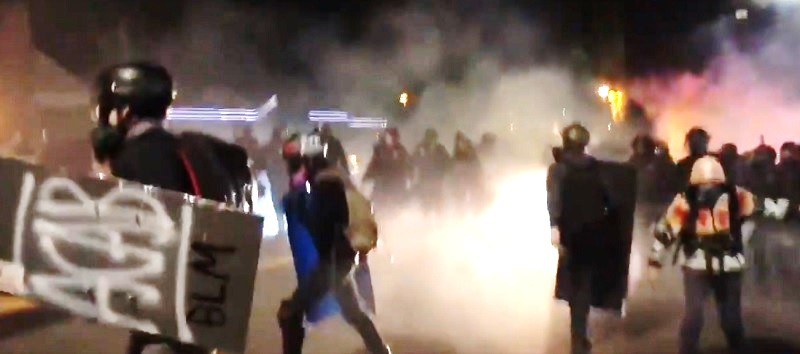

By Chief Joel F. Shults, Ed.D.
We can’t pick on Joe Biden for quoting FBI Director Chris Wray, but we can look for some context.
Ask the business owner whose building and livelihood was burned out by arson, or the police officer struck by a brick, whether antifa is “a thing” or not.
Director Wray wasn’t brushing off the dangers of extremist groups when he testified before Congress in September. Saying that antifa was an ideology and not an organization Wray went on to clarify that the FBI considers antifa a real thing and has investigated violent extremism involving individuals identifying with antifa.
It is exactly the murky nature of antifa and other extremist ideologies that makes them dangerous. Law enforcement agencies in riot torn areas of the country have special challenges gathering intelligence to prevent violent attacks. Because there is no formal organization or hierarchy, monitoring for threats and conspiracies to engage in violence is difficult. Many plans for disruption of lawful protests by antifa and other amorphous ideological groups are spontaneously produced on social media as well as hard to find sites on the dark web.
Although neither candidate was able to finish very many of their statements during the recently televised debate, Biden’s statement and Trump’s hesitance will likely be construed as tacit endorsement by extremists associated with the left and right of American political thought. When individuals have a bent towards extremism, they can be easily triggered by statements left to interpretation. The candidates did little to distance themselves from radical groups that are identified with the parties.
America’s history of dissent and protest began with the ultimately violent protest against the infringement of liberties imposed by King George. The criminal justice system has struggled with the balance of Constitutional rights to free speech and assembly while keeping lives and property safe. The line that must be drawn ultimately is drawn by police officers.
Speech and assembly are freedoms that are bounded by the same rationale used for centuries: your right to swing your fist ends at the other person’s nose. Protests can be regulated by time and place, although the content of speech can not generally be proscribed in advance. Protests that allow assembly of like-minded citizens, and perhaps those who oppose whatever statement is being made by organizers, can progress outside of the boundaries of the safety of the permission given. Most policing strategies allow for a great deal of latitude for gatherings and protests.
Protests, whether by intention or spontaneously, can evolve into small acts of defiance, angry and threatening language, assaultive behavior, vandalism, and rioting.
Civil disobedience also has a significant place in history. The idealism of the civil rights era involved an intentional expectation of arrest. Today’s protestors seem to have forgotten this sacrificial effort and expect complete accommodation by law enforcement. They are often aided by weak-willed politicians and judges who refuse to give peace keeping tools to police officers on the front lines.
Protests, marches, and agitation have proven to be a catalyst for important social changes. Admittedly, even violence and threats have had desired political effect. Armchair observers can bicker over labels, but ideologies like antifa (anti-fascists) can and do spark violence. Certainly, the same can be said about extremist groups from any political bent. People who chose to harm people deserve no protection from criticism and censure regardless of their affiliation.
Law enforcement is not designed to be used to oppose ideology or choose political affiliations. But it is designed to preserve peace, intervene in criminal enterprise and activity, and to protect life and property. If a minority of activists choose to ignore the bounds of the law and expect no accountability for their choices, they cannot be considered courageous promoters of cause, but mere agitators and lawbreakers who must reckon for their actions.